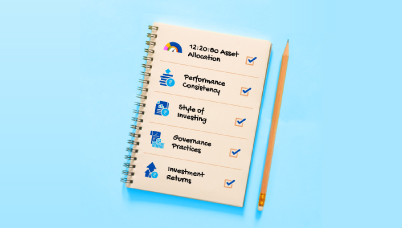Subbu’s insights on Industries condition
Posted On Thursday, Jul 02, 2020
‘If liquidity can come in at such a rapid pace, it can also go out very rapidly. With so much liquidity everywhere, stocks are finding new levels even though the fundamentals continue to be weak.’
The challenge with the smaller-sized companies is not to do with the valuations, it is essentially the stress, says IV Subramaniam, Managing Director, CEO and CIO of Quantum Advisors Pvt. Ltd. and Director, Quantum AMC in an interview with ET NOW. Read his edited interview below.
Have you guys been buyers in the last two-three months with this furious rally or were you observing things?
In March, when the initial reaction was a very sharp sell-down, we actually invested and bought into the stocks and our cash levels were very low. Post that, as the lockdown continued and new data points started coming in, we expected the consumption basket to slow down in the coming year. So, we readjusted and reduced our weights in certain sectors.
Of course, the current month has been surprising in terms of flows but that is happening across the globe. I guess with so much liquidity everywhere, stocks are finding new levels even though the fundamentals continue to be weak at least for the near term.
What kind of commentary is coming from companies after the Q4 numbers? The numbers are relatively less important right now but is there anything which has caught your attention?
The capacity utilisation has been improving. The migrant labourers are coming back in certain companies. They are still expecting that to be an issue for some time, also in any company, you have to recognise that there is a lot of supply chain involved. So, even if one large company is able to solve the issues, the smaller companies which are part of the supply chain, still challenges. We are hearing those kinds of comments as well.
The other comments point out that rural India seems to be holding up quite well which is positive. For those which are largely relying on urban centric consumption, we are seeing a pent up demand witnessed right now. After the initial pent up demand being met we are also expecting some slow down based on the comments and based on our own analysis. It will be a slow improvement coming in only by the fag end of the year.
Where do you see value right now? Is it in the upwards of Rs 50,000 crore in m-cap, all the way to mega caps or do you think in mid-sized companies between $2-3 billion to $5 to $7 billion? Where is more value on risk reward basis?
By and large, we always focus on the more liquid names. For us as a strategy, the universe are those companies which have a million dollars of trading and that tends to be between the mid and large-sized companies.
Within this universe we are finding a mix. It looks like the consumer discretionary segment will slow down, but at the same time, the stocks are not super expensive. It is within a reasonable range.
The consumer staples are still rich in terms of valuations. Maybe, even the retail space to some extent is very rich in valuations. But banks, certain consumer discretionary, some of the PSUs do look attractive to us and even the IT. IT has held well and will continue to do well. There also we find the valuations to be reasonable. The challenge with the smaller-sized companies is not the valuations, but how they manage the current stress. If the stress was very high in the last two months, how do these companies manage -- whether it is cash flow related issue or whether it is relating to staff and access to technology? Those are things which a small company will find it tough to resolve very quickly. So, I would be a little careful when it comes to small-sized companies. We are finding value in the larger names.
How do you see the case for equities over the next five years? Is there a reason to cheer about the way risk free rates are coming down and interest rates are coming down but at the same time the probability of the returns going forward will be that much lower?
The key question really is how the GDP pans out over the next few years and what is the new normal we should be looking out for. Based on that, one can calculate the returns. I do not have a forward looking number as to what one can expect but a large portion of the returns would be dependent on how the GDP pans out over the next few years -- both after it comes out of the current shock and on a normalised basis.
We know that on a normalised basis, you require many things to fall in place including capex, government spending, etc. That is still work in progress. While we do have a broad understanding as to what is likely to take place, I do not want to guess what could be the return on equities. Given all these cyclical events we have seen in the past, Covid is something new. We have seen SARS, we have seen high and low oil prices. There is still a momentum in the GDP and it will continue to grow and we do expect that trend to continue. The question is will it sustain at around 6.5% or will it sustain at 5%? We will have to watch out for all that based on how the economy performs in the next few months and what the government plans in terms of infrastructure spend, capex spend, etc.
How do you analyse this argument that the current bout of strength in the market is largely fueled by the stimulus given out by the global central banks? Also, is there an argument for emerging value which could be one of the triggers for people to have started buying equity?
There is definitely value. A large portion of the value came up when the markets declined in March end. So, I am not questioning that there was value and there is a need to be invested based on certain long term assumptions. However, the pace at which it moved was surprising and that is largely a function of easy availability of liquidity as well. This bounce back is not peculiar to India you are finding it even in developed markets like the S&P.
So definitely, the high liquidity has an influence while at the same time, we have to recognise that being a growing economy there is still value but where that value will finally sit and how it will evolve is unclear because there has been this huge disturbance in the last two months and that has thrown up a lot of challenges for different companies. Each one will have to find a way to resolve that.
Long term, companies will do well and possibility to earn good returns are high. Near term, there is always the risk that if the liquidity can come in at such a rapid pace, it can also go out at a very rapid pace even on a very small risk coming up.
Even if the border issue with China gets escalated, it could make certain people nervous. So, liquidity is a problem. Not all of them would have come on the basis of long-term fundamentals. Some of them would be based on the availability of easy money, some would be very short term in their orientation and there is always a risk and that money can go out very rapidly.
Related Posts
-

Do You Need to Update Your KYC/Modify KYC?
Posted On Friday, Apr 26, 2024
New KYC Regulation Effective April 1st 2024
Read More -

Are You Stuck in the Past or Ready for a Secure Future?
Posted On Wednesday, Jun 29, 2022
The ever-growing number of mutual fund schemes on offer has made it challenging for investors to select the best and most suitable one.
Read More -

Received an Increment? Step-up Your SIPs
Posted On Wednesday, Jun 01, 2022
For instance, let’s assume that you have registered for a monthly SIP of Rs 5,000 for a 10-year period and later on try to step-up the SIP at an annual frequency, say by Rs 500. In the first year...
Read More



